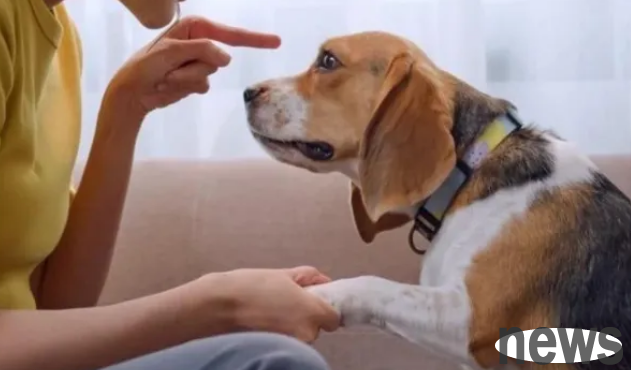Raising a dog is the choice of many people. The dog is loyal and cute, bringing us endless joy. However, dogs sometimes become naughty and do things that are troublesome. At this time, we often can't help but want to criticize them. But, do you know? Some behaviors that cannot be done when training dogs, otherwise it may make the dog feel scared, lose trust, and even lead to escalation of problem behavior. Today, let’s take a look at the 5 behaviors that are absolutely forbidden when training dogs, and learn the correct way to deal with them so that you can easily solve dog problems!
1. Physical punishment such as beating - hurts the body and mind of the dog, leaving a psychological shadow

Many owners can't help but want to use corporal punishment to teach them a lesson when their dogs make mistakes. However, this method not only fails to make dogs understand mistakes, but will leave a deep psychological shadow on them. Dogs who are physically punished will feel extremely fear and uneasy, lose the ability to think about problems, and will only remember the feeling of "fear". This approach will not only fail to solve the problem, but will also make the dog feel fear and alienated from you.
The correct way to deal with it should be: use a peaceful tone and expression to tell the dog "no". You can point your finger to the wrong place and tell it simply and clearly why it is wrong to do so. At the same time, rewards and praises can also be used to guide dogs to do the right behavior.
2. Reprimand while chanting - making dogs fear the name

Some owners will unconsciously criticize the dog while yelling the dog's name. However, doing so may allow the dog to associate the “name” with “the precursor to what is an annoying thing happening.” Over time, whenever you hear your name, the dog will feel nervous and scared, which undoubtedly puts unnecessary pressure on the dog's life.
The correct way to do it is to avoid using the name of the dog when criticizing it. You can refer to it in other ways, such as "little guy" and "baby" and other intimate names. At the same time, in daily life, you should use positive language and attitude to call the dog's name so that it can feel your love and care for it.
3. Criticize after a while - confusing and puzzled dogs
Sometimes, we may be busy or other reasons before criticizing after the dog makes a mistake. However, doing so often makes dogs confused and puzzled. Because they cannot understand why they are criticized now, nor can they associate criticism with previous wrong behaviors.
The correct way to do it is to criticize the dog immediately after it makes a mistake. You can point your finger to the wrong place and tell it why it is wrong to do so. If time has passed, you can also simply tell it why it is criticizing it, but make sure that the tone and attitude are clear and firm.
4. Long-term preaching - makes dogs feel stressed and bored

Some owners will give long-term preaching like humans when criticizing dogs. However, this practice does not make any sense to dogs. Because dogs cannot understand complex language and content, they will only feel stressed and bored.
The correct way to deal with it should be: tell the dog directly and concisely "no". You can express your meaning in short and clear sentences, such as "Don't bite" and "Don't jump to bed". At the same time, you can also help your dog understand the correct behavior through demonstration and guidance.
5. Smile or caress when criticizing - let the dog misunderstand your intentions
Some owners may smile or caress the dog's body because of feeling distressed or unbearable when criticizing the dog. However, doing so will cause the dog to misunderstand your intentions, thinking you are praising it or thinking that its behavior is adorable. This will undoubtedly aggravate dogs' problem behavior.
The correct way to do it is to keep a serious and serious attitude when criticizing dogs. Your tone and expression should clearly convey your dissatisfaction and criticism of your dog's wrong behavior. At the same time, we should avoid giving the dog too much attention and interaction immediately after criticism, so as not to mistakenly believe that problematic behavior can win the attention of the owner.
The key points to take correct responses when training dogs
After understanding the five behaviors of absolute NG during dog training, we also need to master the correct response points to ensure that the dog can understand and correct wrong behaviors.
First, criticize your dog immediately after making a mistake, making sure they can connect criticism with wrong behavior. Secondly, use concise language to convey your meaning and avoid lengthy preaching. At the same time, your tone and expression should be serious and serious, so that the dog can understand your attitude. Finally, for some time after the criticism, the dog can be properly ignored or left the room to make it aware of the consequences of the problem behavior.
In addition, we can also guide dogs to do the right behavior through positive methods. For example, give timely rewards and praises when the dog responds correctly to let it understand which behaviors are welcome. At the same time, you can also enhance your feelings with your dog through games and interaction, making training easier and more enjoyable.
Summary

Training dogs is not an easy task, but as long as we master the correct methods and techniques, we can easily solve dog problems. When criticizing dogs, we should avoid the five behaviors of using absolute NG, but should convey our intentions in a clear and direct way. At the same time, we should also pay attention to positive guidance and rewards, so that dogs can learn and grow in a relaxed and pleasant atmosphere. Let us work hard together and become better owners!
